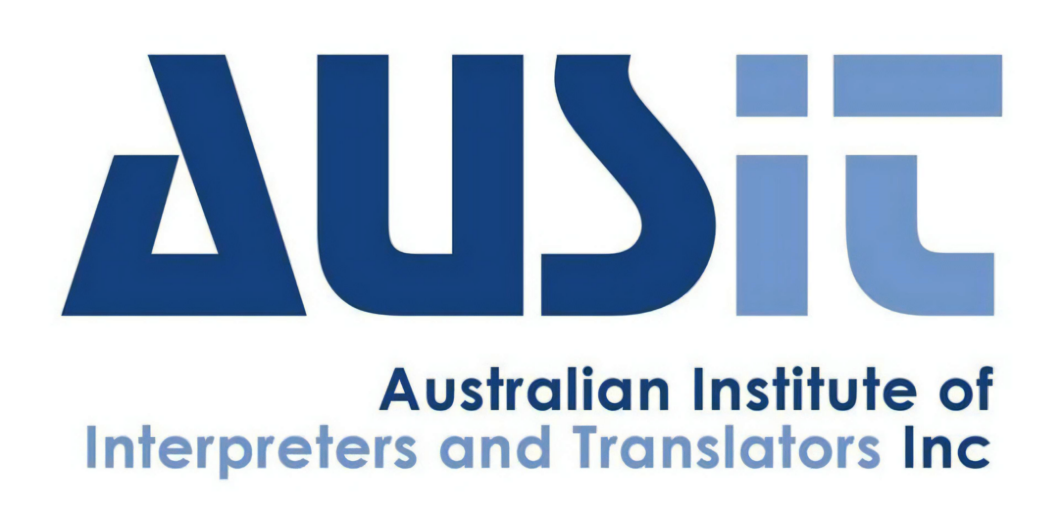PRACTITIONER TIPS
Periods of time – of varying lengths – spent ‘on hold’ are a consistent feature of telephone interpreting. Whether this downtime is seen as a bane or blessing depends on how the ‘dead’ minutes are spent. Italian–English interpreter Robert Newson shares some simple finger, hand and wrist drills that he finds reduce work-related stress as well as offering physical benefits.

It’s widely accepted that stress compromises both comprehension and expression. So as interpreting assignments are often highly fraught, any expedient that reduces tension will benefit performance.
I find that finger, hand and wrists drills are extremely compatible with telephone interpreting, and offer the ancillary benefit of increasing manual dexterity and strength in daily life. This is my arsenal:
Baoding or Chinese meditation balls
Traditional Chinese medicine holds that spinning these balls in the hand stimulates the body’s energy meridians and promotes health and wellbeing. I’m going to take a more prosaic line and say that coordinating them is distracting, and in times of stress, distraction is a positive. Typically, it’s easier to spin them in one direction, so spinning in the opposite direction creates even more distraction, as greater concentration is required. Personally I find the chimes in Baoding balls too noisy, so I use large solid steel ball bearings (5 cm diameter is ideal for my medium-sized male hand).
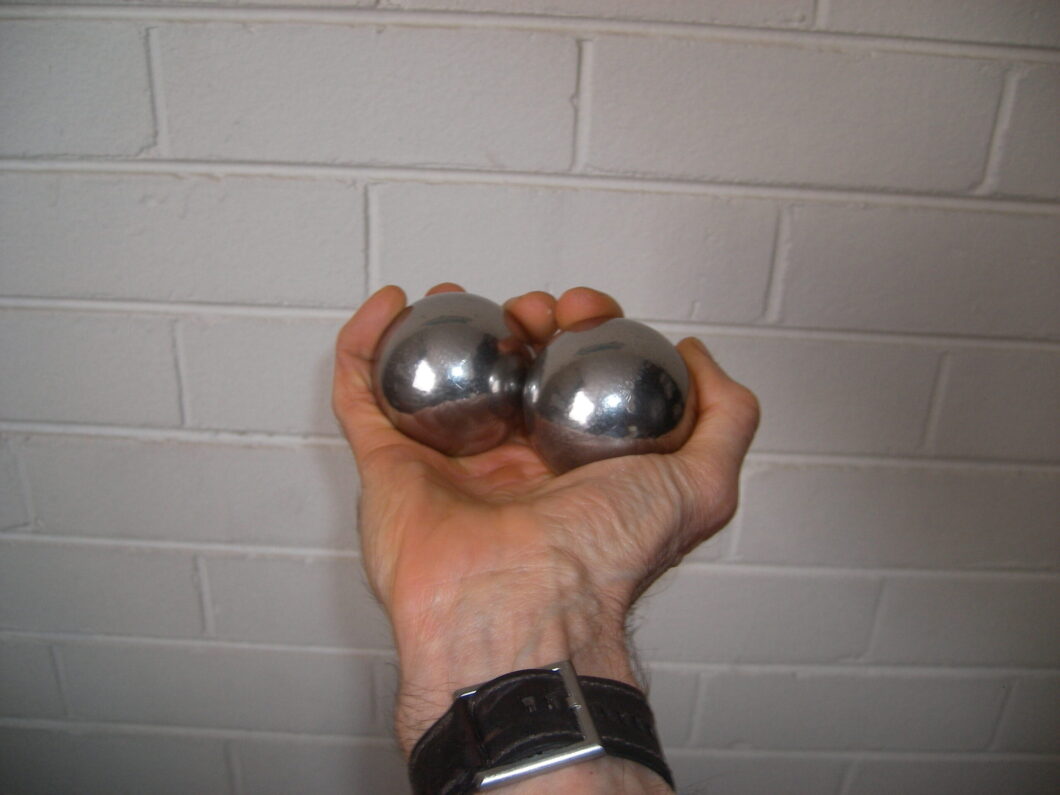
Flex bars
These rubber rods are for wrist flexion, extension and rotation. You can bend them against the edge of your desk or a nearby wall if using one-handed, or twist and bend them using two hands. I prefer a 4 cm diameter rod, and I recommend the extra-light or light model for anyone of moderate strength (the aim is distraction, not discouragement).
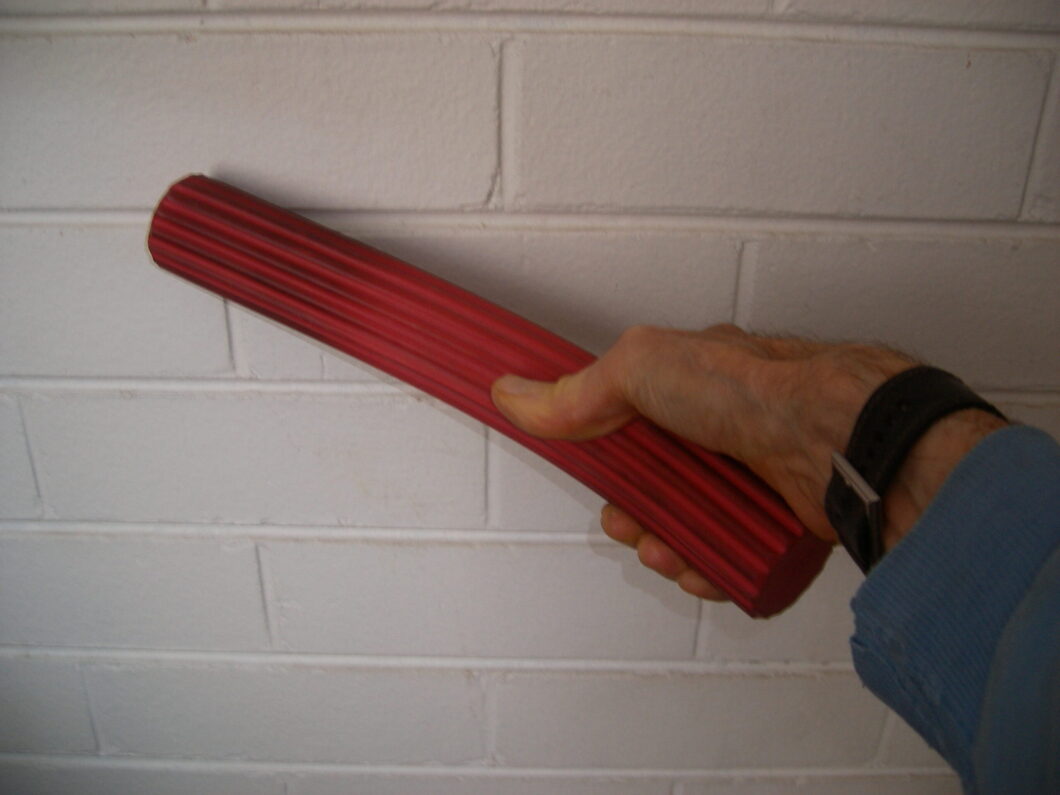
Rubber bands
For most of us the extensor muscles in our wrists (used to open our hands) tend to get less of a daily workout than the flexors (used for gripping). This imbalance can lead to serious tendon problems, but a more benign effect is reduced wrist strength. To counter this asymmetry I use a premium quality elastic band with high rubber content (80–90% – the higher the rubber content, the more supple the band and satisfactory the exercise.) A 65 x 12 mm band works well for my hand size. I loop it around the intermediate phalanges of my fingers, and repeatedly splay then relax them.
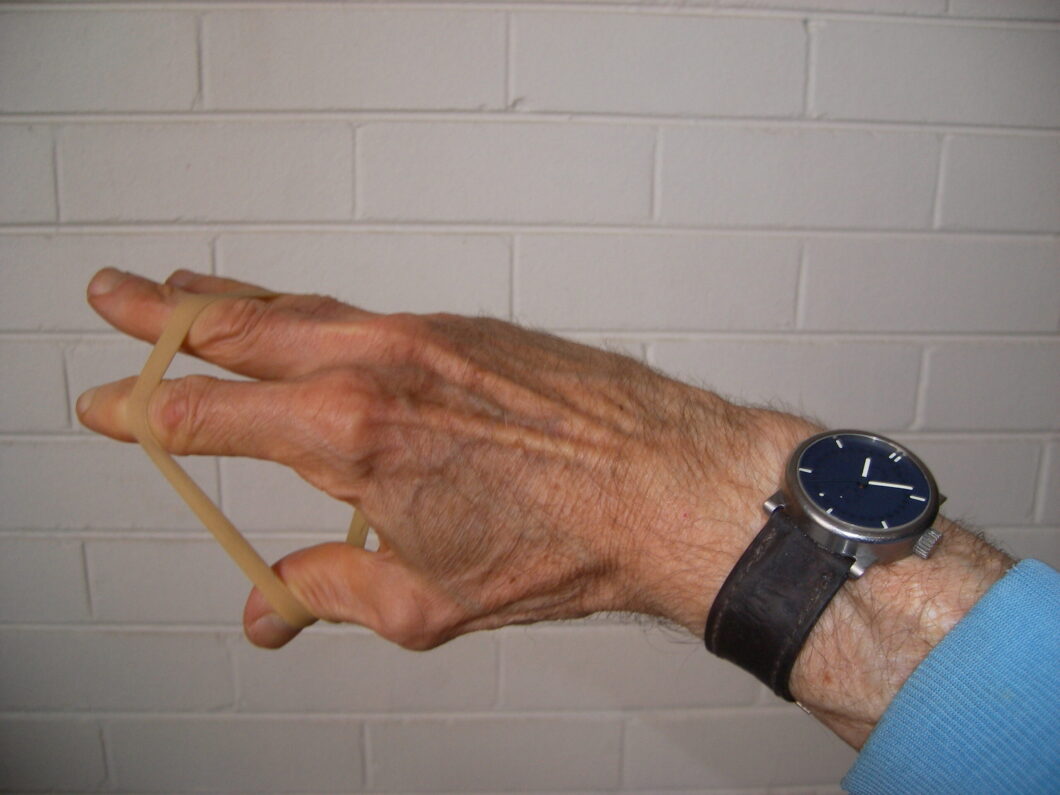
Shot put
The forearm extensor muscles, like their wrist equivalents, are underworked vis-à-vis the flexors, and to counter this I use a shot (the metal ball thrown in the athletics event of ‘shot put’). I recommend using one that weighs 3 kg or less. I hold the shot in one hand, palm facing down, arm stretched out. With the arm of my desk chair serving as support for my elbow I slowly raise and lower the shot, repeat this several times, then do the same with the other hand.
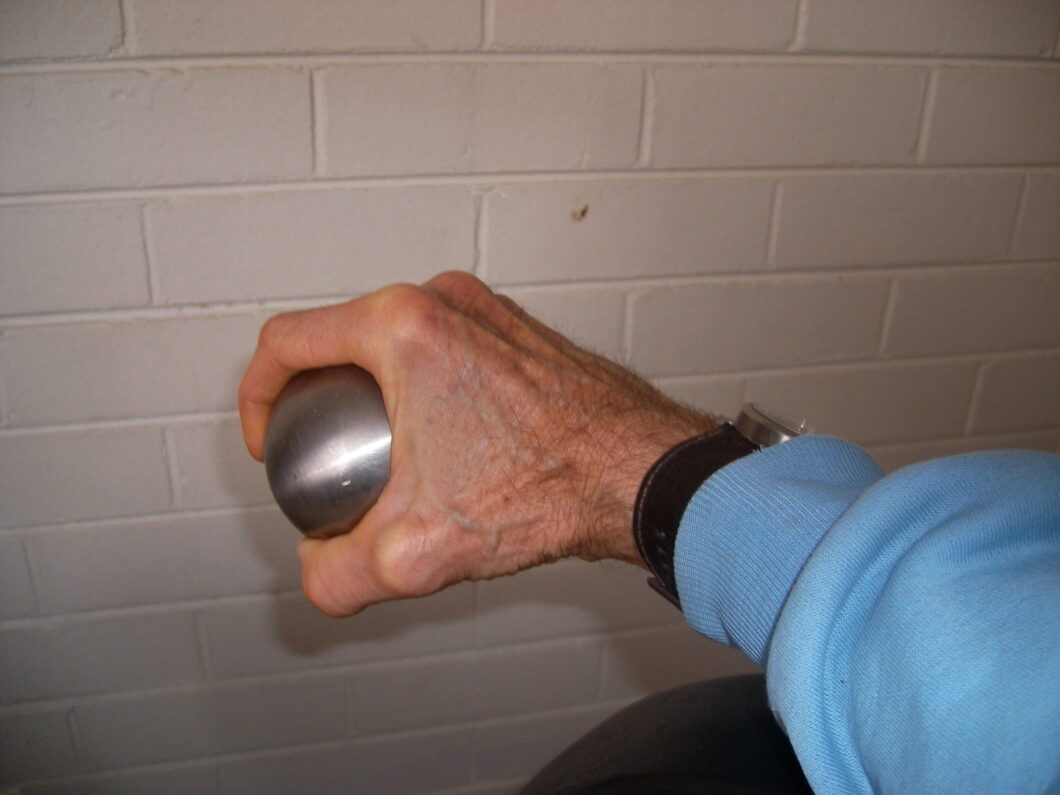
In the same way that doodling or fidgeting is a palliative, these exercises can be made strenuous enough that one is momentarily absorbed, lessening the tendency to needlessly dwell on a stressful interpreting assignment.
Robert Newson is an Italian–English interpreter. Based in Perth, he has lived and worked in Italy, and has since gained over three decades of experience in interpreting – mainly legal, medical and community – for government and private agencies.
Flex bars, ball bearings and shots are all available online.
ADVERTISEMENT:


